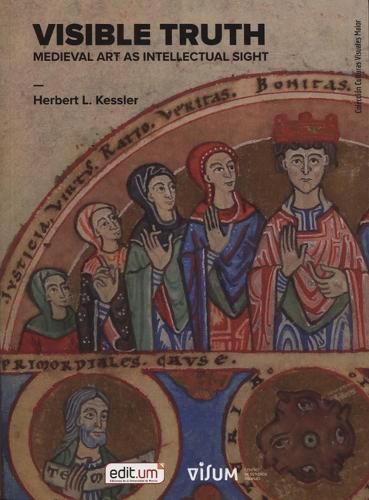Readings Newsletter
Become a Readings Member to make your shopping experience even easier.
Sign in or sign up for free!
You’re not far away from qualifying for FREE standard shipping within Australia
You’ve qualified for FREE standard shipping within Australia
The cart is loading…






Medieval art is ventriloquy. It distracts an audience, fully aware that the true voice is elsewhere, into believing that the oracle is actually present. The fourteen essays in Visible Truth focus on the ventriloquist's techniques. Among many topics, they discuss the consequences for art of Christianitys defining the people of the book as strict adherents to the Second Commandments prohibition of material representation, a strategy for appropriating Hebrew Scripture and reinterpreting to support physical images. Even though Jewish art also flourished during the Middle Ages, Christian came particularly to focus on materiality, artifice, experience, and emotional response to representations of Christ, whose own dual nature conducted provided a paradigm. They also attended to theories of vision and mechanisms of seeing mirrors, telescopes, surveyors tools as means for showing God to humans, whose sight, they believed, Adams sin had weakened. As the essays in this volume argue, however, the line of sight art provided remained asymptotic to the Ineffable, who remained inapprehensible with the senses of the body, but glimpsed only through oculos mentis.
$9.00 standard shipping within Australia
FREE standard shipping within Australia for orders over $100.00
Express & International shipping calculated at checkout
Medieval art is ventriloquy. It distracts an audience, fully aware that the true voice is elsewhere, into believing that the oracle is actually present. The fourteen essays in Visible Truth focus on the ventriloquist's techniques. Among many topics, they discuss the consequences for art of Christianitys defining the people of the book as strict adherents to the Second Commandments prohibition of material representation, a strategy for appropriating Hebrew Scripture and reinterpreting to support physical images. Even though Jewish art also flourished during the Middle Ages, Christian came particularly to focus on materiality, artifice, experience, and emotional response to representations of Christ, whose own dual nature conducted provided a paradigm. They also attended to theories of vision and mechanisms of seeing mirrors, telescopes, surveyors tools as means for showing God to humans, whose sight, they believed, Adams sin had weakened. As the essays in this volume argue, however, the line of sight art provided remained asymptotic to the Ineffable, who remained inapprehensible with the senses of the body, but glimpsed only through oculos mentis.